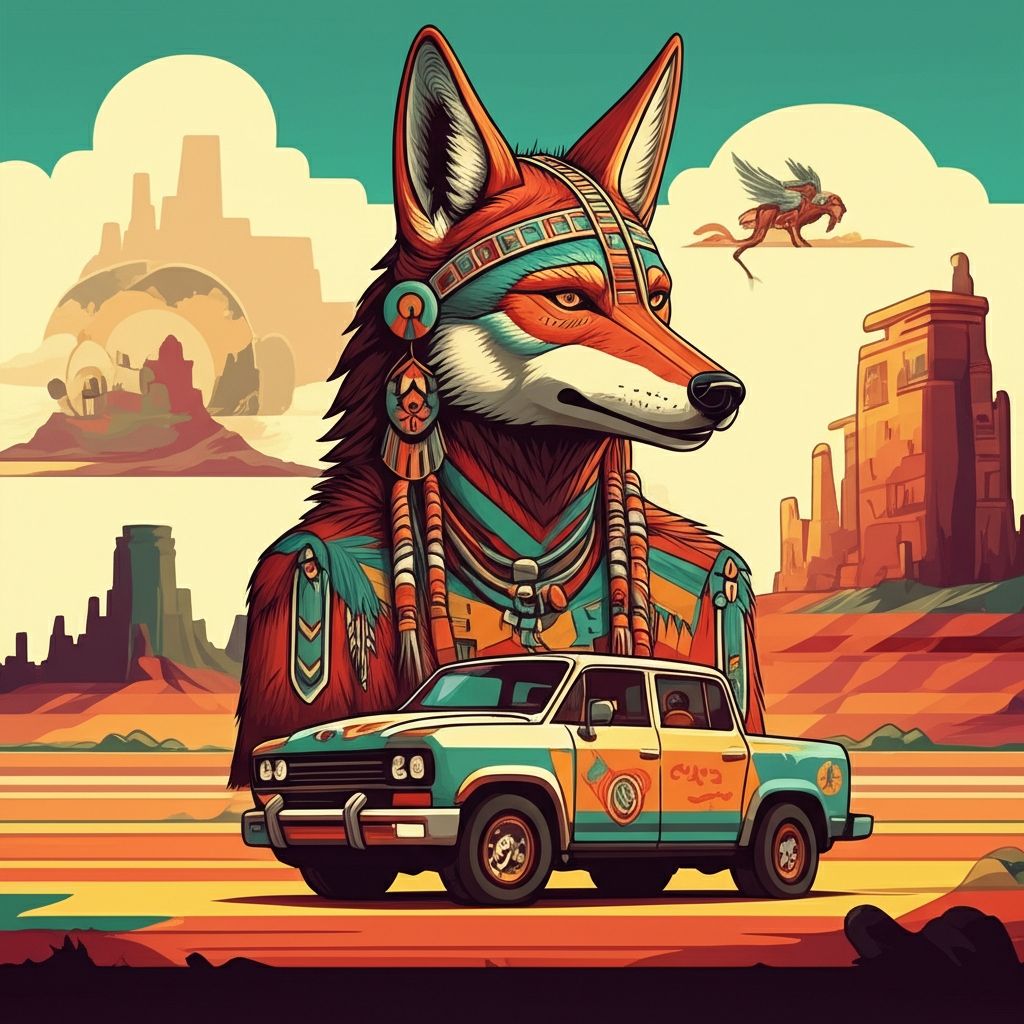
The ancient world, for many cultures, was a tapestry woven with threads of myth and legend, where the natural and the supernatural intertwined to explain the mysteries of existence. Among these enduring tales, the concept of shapeshifters and beings of potent, often dark, magic has echoed across continents and through time. While the figure of the Skinwalker is most prominently associated with Navajo folklore, its thematic resonance, the idea of transformative beings wielding great power, can find curious parallels and interpretations when viewed through the lens of the Pacific Northwest’s rich mythological landscape. This article delves into the echoes of such narratives, not as a testament to belief, but as an exploration of ancient storytelling, cultural expression, and the enduring human fascination with the unknown.
The Genesis of Tales: Worlds Woven with Spirit
To understand the roots of these stories, we must transport ourselves to eras long past. For the Navajo people of the Southwestern United States, life was inextricably linked to the vast, arid landscapes of mesas, canyons, and deserts. Their worldview was deeply spiritual, perceiving a dynamic balance between the Holy People (Diyin Diné) and the earthly realm. Stories served as vital conduits for transmitting knowledge, moral lessons, and explanations for the natural world. The concept of witchcraft, and the beings associated with it, often represented the antithesis of this balance, the forces that disrupted harmony and brought misfortune.
Similarly, the indigenous peoples of the Pacific Northwest, from the coastal Salish to the Haida and Tlingit, inhabited a dramatically different, yet equally vibrant, world. Their lives were shaped by the towering temperate rainforests, the abundant ocean, and the majestic mountain ranges. This environment teemed with life, and their mythologies were rich with powerful spirits, tricksters, and beings who could traverse the boundaries between the animal and human, the seen and the unseen. Their creation stories, tales of the Raven trickster, or the powerful nature spirits, all speak to a world where transformation and potent spiritual forces were an integral part of understanding their existence.
The Shadowed Form: Attributes of the Skinwalker
The Skinwalker, within Navajo tradition, is a complex and fearsome figure. It is not simply a beast or a monster, but a human being who has acquired forbidden knowledge and power through dark rituals, often involving desecration and the sacrifice of loved ones. This power allows them to transform into various animals, typically coyotes, wolves, owls, or foxes, but also more unsettling forms. Their appearance in animal guise is often described as distorted, unnatural – a wolf with glowing eyes, an owl with unnatural limbs. More chillingly, they are said to possess the ability to mimic the voices of loved ones to lure victims, and to emit a piercing, unearthly scream that instills terror.
Symbolically, the Skinwalker represents the corruption of knowledge and power. It embodies the fear of betrayal from within one’s own community, the perversion of natural laws, and the destructive potential of ambition untethered by moral constraint. The ability to transform is not a gift of nature, but a stolen, corrupted power, a violation of the sacred order. Their actions are driven by malevolence, a desire to cause harm, to steal life force, or to spread fear and despair.
Whispers Across the Divide: Bridging Mythologies
While the specific details of the Navajo Skinwalker are unique to their cultural context, the underlying archetypes of transformative beings with potent, often dangerous, magical abilities can be found in various mythologies. In the Pacific Northwest, stories abound of beings who could shift their form. While not labeled “Skinwalkers,” figures like the Kwis kwis (a shape-shifting spirit often depicted as a wild man or child who lures people to their doom) or certain powerful shamans who could commune with and embody animal spirits, carry thematic echoes.
Imagine, for a moment, a narrative that might bridge these landscapes. Picture a lone hunter, deep within the ancient cedars of the Pacific Northwest, the mist clinging to the dense foliage like a spectral shroud. The air is thick with the scent of damp earth and decaying leaves. This hunter, perhaps a young man tasked with proving his bravery, has ventured further than any before. He has heard the elders speak of the Yee Naaldlooshii, the “one who walks on all fours,” a being whispered about in hushed tones around the fire, a taboo subject that chills the marrow.
The legend speaks of individuals who, driven by a desperate hunger for power or a twisted curiosity, delve into forbidden practices. They might seek out ancient, shadowed groves, places where the veil between worlds is thin, and perform rituals that defy the natural order. The story could tell of a respected elder, or perhaps a rival from a neighboring tribe, who, in their pursuit of dominance, began to change. Their eyes might have taken on a predatory gleam, their gait becoming unnaturally swift, their whispers laced with an unsettling cadence that mimicked the rustling of leaves or the cries of nocturnal creatures.
As the hunter presses on, the forest seems to grow more hostile. The familiar calls of birds cease, replaced by an unnerving silence. Then, he hears it – a sound that is both familiar and utterly alien. A mournful howl, but with a distinctly human timbre, a chilling lament that seems to emanate from the very trees. Or perhaps, a desperate cry for help, mimicking the voice of a lost child, drawing him deeper into the treacherous undergrowth. The hunter, recalling the cautionary tales, feels a primal fear grip him. He knows this is not merely a wild animal, but something far more sinister, a being that has shed its humanity for a terrifying, animalistic form, its motives shrouded in darkness. The forest itself seems to hold its breath, bearing witness to this unsettling transformation.
This narrative, though inspired by the spirit of the Skinwalker, is placed within a Pacific Northwest setting. It highlights the fear of individuals who corrupt their natural state for personal gain, and the unsettling power of transformation used for malevolent purposes, themes that resonate across diverse mythologies.
Symbolism: The Shadow of Disruption
In both traditions, the concept of these transformative beings serves as a powerful symbolic tool. They represent the primal fears of the unknown, the darkness that lurks within the human heart, and the consequences of straying from the established moral and spiritual order. For the Navajo, the Skinwalker embodies the ultimate taboo, the corruption of the sacred covenant between humans and the Holy People, leading to societal disruption and individual suffering. They served as a potent reminder of the importance of living in balance and harmony.
In the Pacific Northwest, while not identical, similar anxieties are expressed. The beings who can shapeshift often represent the untamed forces of nature, the capricious whims of spirits, or the dangers of unchecked ambition. They serve as cautionary tales, emphasizing respect for the natural world and the importance of maintaining spiritual integrity. The disruption of natural order, whether through witchcraft or the abuse of spiritual power, is a recurring theme that underscores the fragility of balance.
Modern Echoes: Reimagining Ancient Fears
Today, the Skinwalker continues to captivate the modern imagination. It has been a recurring figure in literature, film, and video games, often portrayed as a terrifying antagonist, a creature of primal fear and supernatural prowess. These modern interpretations often draw on the core elements of transformation, malevolence, and the uncanny ability to mimic and deceive. While the specific cultural context of the Navajo may be simplified or altered, the archetype of the shapeshifter with dark intent remains a potent source of horror and intrigue.
In cultural studies, the Skinwalker is examined as a significant element of Navajo folklore, offering insights into their spiritual beliefs, social structures, and their understanding of evil. Scholars explore the psychological aspects of these narratives, how they reflect societal anxieties and moral boundaries. Similarly, the transformative beings of the Pacific Northwest continue to be studied as vital components of indigenous heritage, offering rich cultural narratives that speak to the interconnectedness of humanity and the natural world.
Conclusion: Threads of Imagination and Heritage
It is crucial to reiterate that the Skinwalker and the transformative beings described here are figures of traditional stories, born from the imagination and cultural understanding of ancient peoples. They are not entities to be believed in, worshipped, or practiced. As Muslims, we recognize that the only true Creator and Sustainer of all existence is Allah (SWT). Our understanding of the world is rooted in divine revelation and the pursuit of knowledge through the lens of faith.
Yet, these ancient narratives, whether from the arid mesas of the Southwest or the verdant forests of the Pacific Northwest, hold a profound value. They are testaments to the enduring human need to explain, to understand, and to grapple with the mysteries of life and death, of good and evil. They are threads in the rich tapestry of cultural heritage, showcasing the boundless creativity of human imagination and the powerful tradition of storytelling that connects us to our past. Exploring these myths, with respect and a critical mind, allows us to appreciate the diverse ways in which humanity has sought meaning in the world around them, while grounding ourselves in our own faith and understanding.





